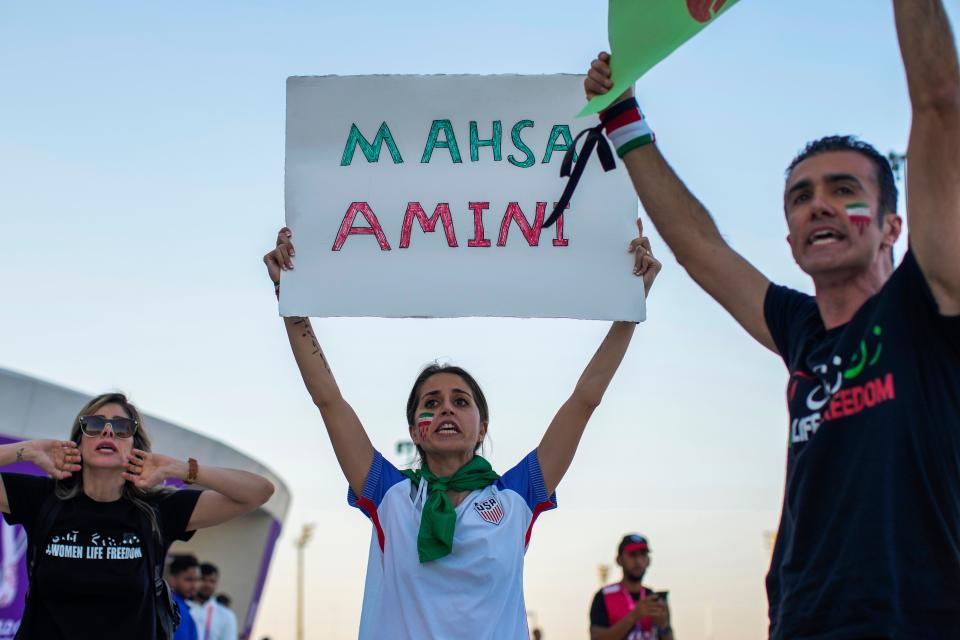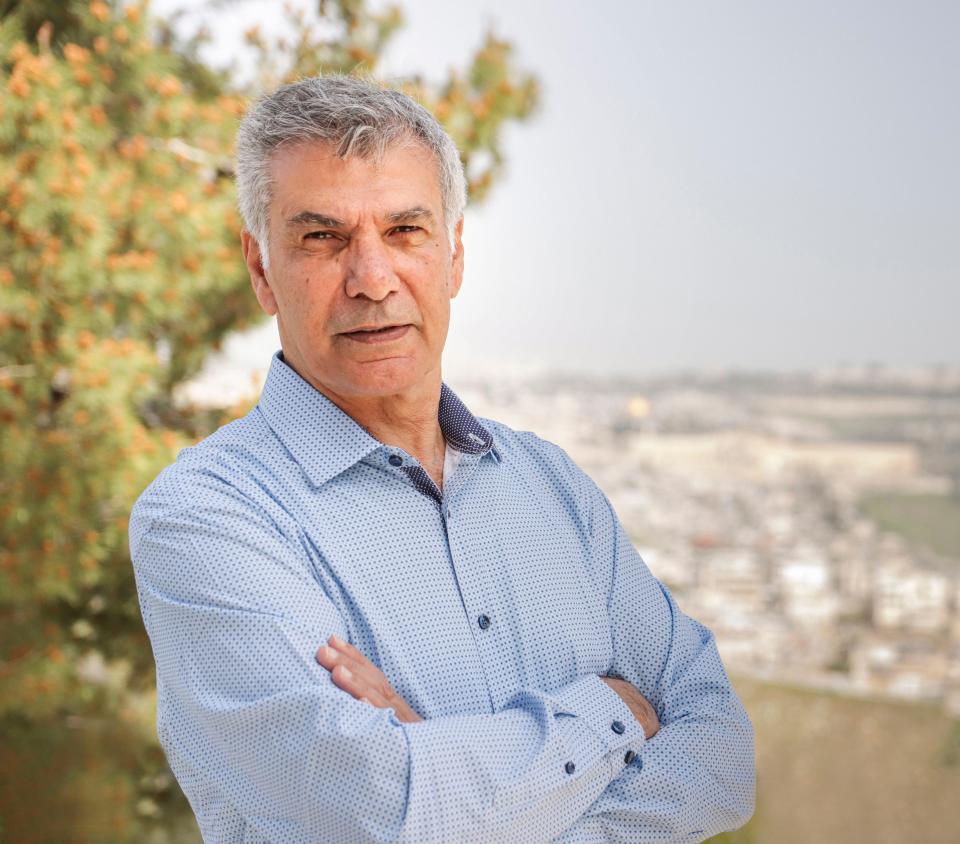The uprising in Iran is a struggle over identity. This is why | Opinion
On Sept. 16, Mahsa Amini, a 22-year-old Iranian woman of Kurdish origin, died after her apparent torture and beating by Iranian morality police because she did not wear the veil covering her hair in accordance with the provisions of local law.
Her death shocked and disrupted Iranian society and the world at large. The Lebanese journalist Huda al-Husseini wrote, "In Iran, 83-year-old men kill 22-year-old young women. In Iran, the past kills the future."
What some describe as a protest, others see as an uprising. Why is it important to distinguish between the two?
Iran is a country home to 86 million people. Its median age is 31, and about half of the country's population is younger than 43 years old. These are people who were born into a life ruled by a theocratic, oppressive regime.
Every few years, "protests" break out, usually in attempts to bring about economic, political, and social reforms. Each time, the regime suppresses the protest with an iron fist. Thousands of Iranians are killed, and thousands more are carted away to languish and be tortured in prisons. Each time the protests fade, and no meaningful change is affected.
More perspective:Iran's horrific situation feels a world away. It's not. We must take a stand for women.
What is happening today in Iran is different. Instead of being another protest, it's an uprising because it aims directly at the mullah regime's ideological foundations and core values. As far as the regime is concerned, a red line has been crossed because the uprising encourages the open defiance of the cultural and social codes it imposes. Iranian women are burning the hijab, young Iranians are dancing and kissing in public, and these public displays of dissent aren't about economic challenges, societal grievances, or political needs; they are about the core of the Iranian people's identity.

Iran's younger generation doesn't see things the same way as their parents and definitely has a different perspective than the mullah regime. The two can't coexist because their outlook, beliefs, and vision are at odds with each other. This is what led the younger generation to rise up — and together with increasingly expanding circles of the society — send a clear message: down with the oppression and down with the Mullah regime.
One noteworthy element of this uprising is the paradoxical position the West has taken. Western public opinion shows solidarity and support for the uprising in Iran. Yet, notably, some politicians, cultural icons and media associated with the democratic and progressive camp who historically have positioned themselves as the torchbearers of human rights, women's rights, freedom, freedom of expression, etc., either remain silent or misattribute the uprising to economic and social hardships. Some justify their silence or evasive position by saying they fear their support for the uprising will be interpreted as "Islamophobia." Yet, Iranian opposition activists and Arab commentators are taking note of their silence and evasiveness.
That silence and evasiveness are not surprising. Because ironically, democratic and progressive elements are encouraging the conciliatory and appeasing policies towards the Mullah regime. That might be the biggest mistake Western governments and influencers are making — and they ought to refocus their efforts and recalibrate their compass. As former President Barack Obama admitted, the U.S. and the West were wrong when they turned their backs on the protest that broke out in Iran in 2009, which later became known as the "Green Revolution."
Throughout history, there have been cases in which individuals create — either by accident or unintentionally — profound change on a massive scale. In December 2010, a young Tunisian peddler named Muhammad Bouazizi set himself on fire in an act of desperation and protest in the face of a grim reality and hopeless future. With this act, Bouazizi's martyrdom led to perhaps one of the most defining events in Middle Eastern history — the "Arab Spring," — which essentially became an ideological earthquake that reshaped the region.
At this stage, no one can fully predict the aftermath of the uprising in Iran. On the one hand, at this time, it does not seem that the uprising will result in the same mass demonstrations that in 1979 led to the fall of the Shah's regime. On the other hand, what's fueling the uprising, the struggle for a life of freedom, dignity, and progress, is inexhaustible.
No expert or pundit can fully ascertain whether Mahsa Amini's death will cause a defining event on the scale of the "Arab Spring." However, I think we can decisively say that after Mahsa Amini's death, Iran won't be the same as it was before September 2022.
Avi Melamed, the author of "Inside The Middle East | Entering A New Era," is a former Israeli intelligence official and the former senior Arab affairs advisor to Jerusalem mayors Teddy Kollek and Ehud Olmert. Fluent in the languages and cultures of the Middle East, and an expert on current regional affairs and their impact on the geopolitics of the Middle East. Heis the founder and chief education officer of Inside the Middle East, a nonprofit devoted to providing professional knowledge about the Middle East and empowering critical thinking by way of non-partisan and innovative education.

This article originally appeared on NorthJersey.com: The uprising in Iran is a struggle over identity. This is why

